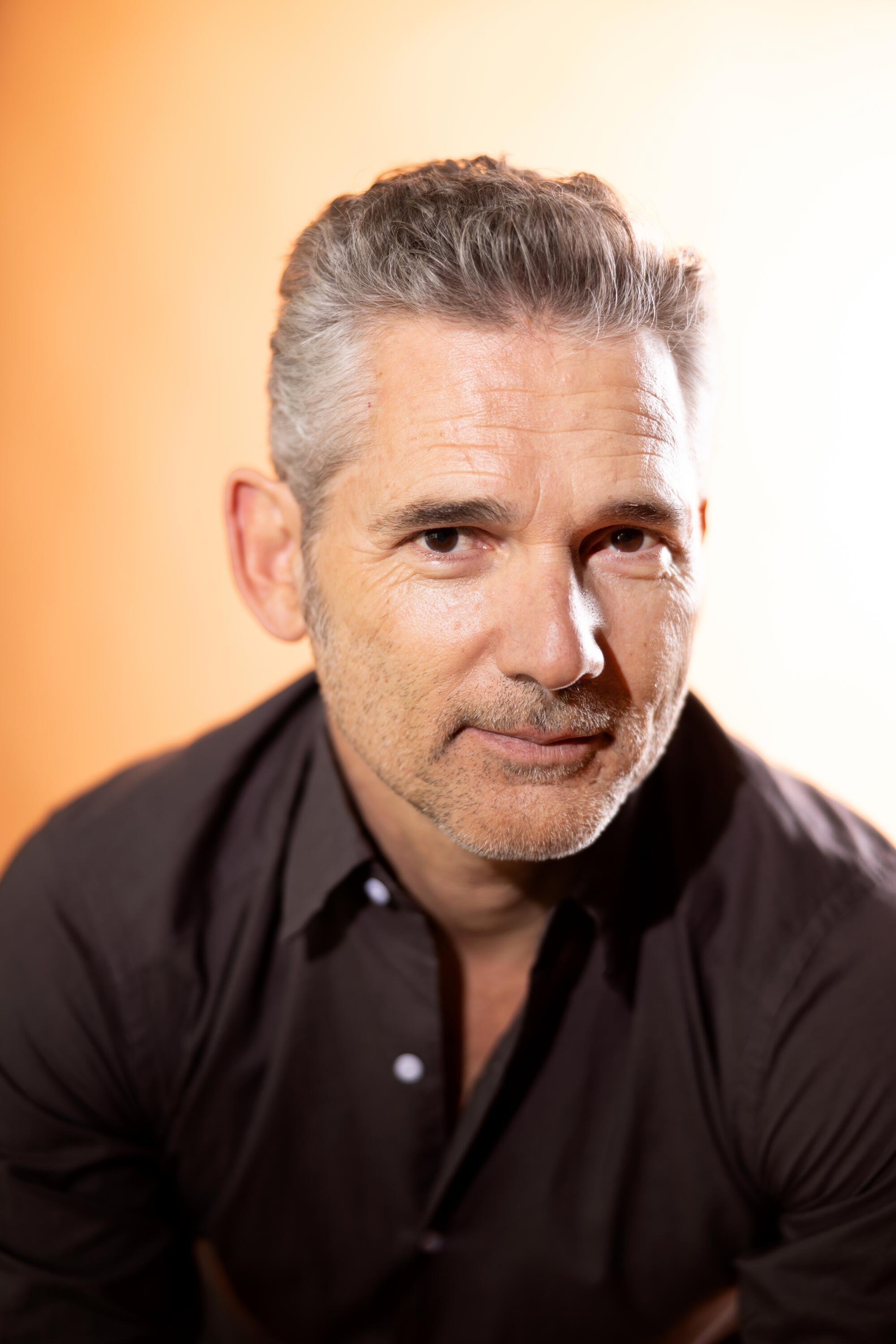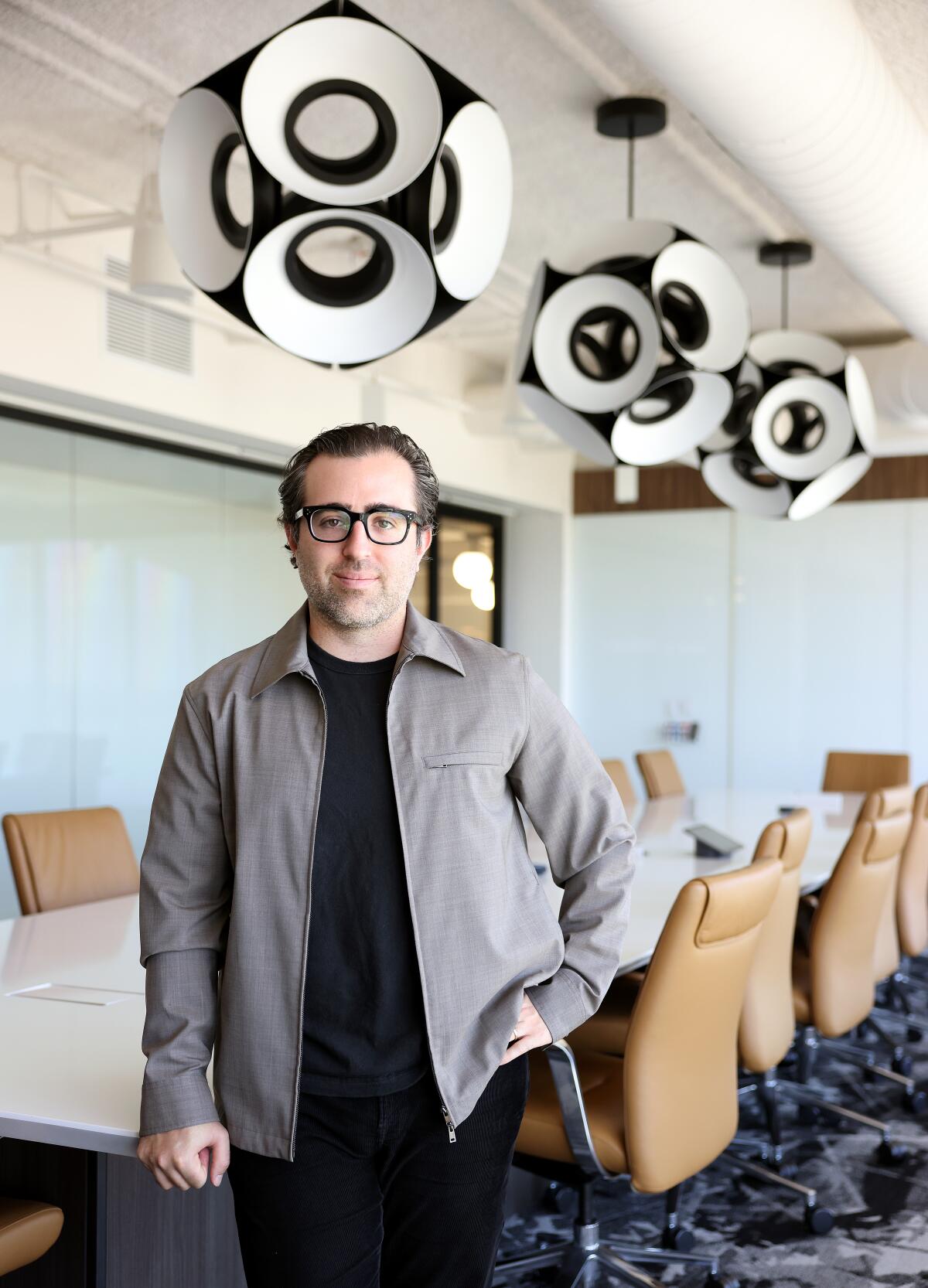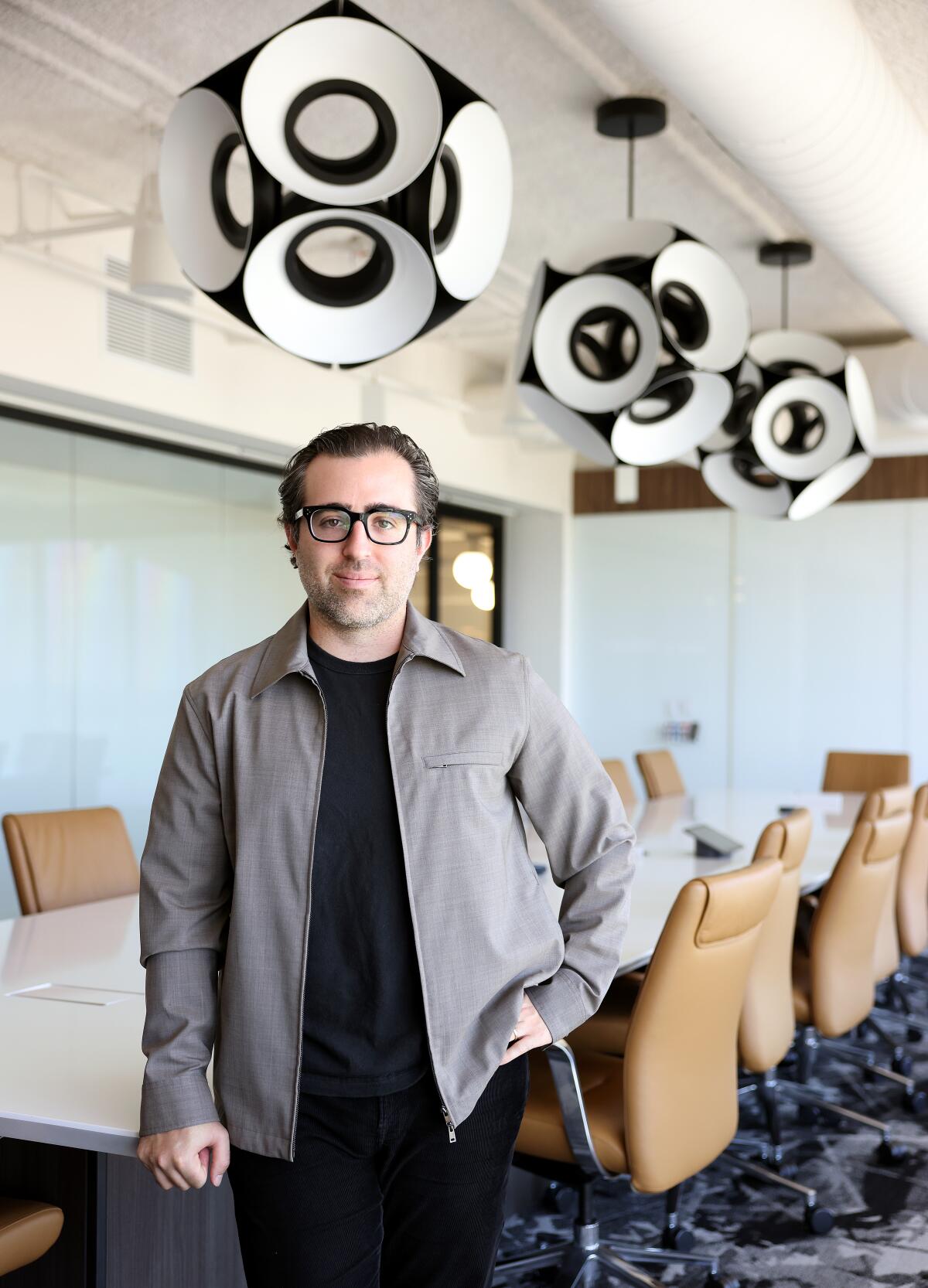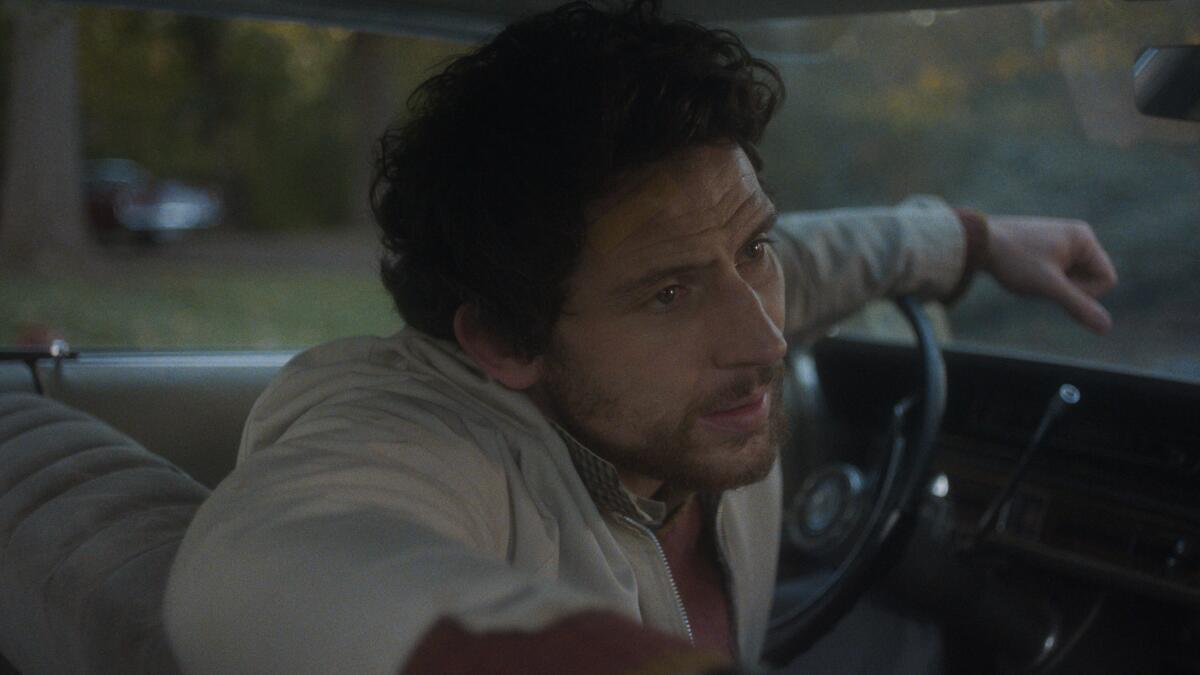For Eric Bana, ‘Untamed’ and its wilderness was hard to leave behind
When Eric Bana is not filming, he’s more than likely riding a motorcycle in a remote part of Australia. He’s been doing it since he was a kid, having grown up in a semi-industrial part of the suburbs of Melbourne on the verge of farmland. Now, it’s his solace on days off.
“It’s a vulnerable feeling, it’s an exciting feeling,” he says on a video call. “You have to be self-sufficient. You have to think worst-case scenario. What happens if I get a flat tire when it’s 120 degrees and there’s no water around? It keeps you awake.”
So when, back in 2019, Bana was given the pilot script for the Netflix limited series “Untamed,” he was immediately attracted. He would play the role of Kyle Turner, an agent in the Investigative Services Branch of the National Park Service in Yosemite — essentially a park detective. It’s a murder mystery yet set against the kind of wilderness that Bana loves.
“I just felt a kinship for Kyle immediately,” he remembers. “I don’t know if it was just like the shared love for the outdoors and how that affects our psyche and our well-being, our sense of self, our emotional journey in life — I just immediately felt very strongly for Kyle.”

In “Untamed,” Eric Bana plays Kyle Turner, an agent in the Investigative Services Branch of the National Park Service. The show is set in Yosemite National Park, though it was filmed British Columbia.
(Ricardo Hubbs / Netflix)
Bana stuck with the project through the COVID pandemic and the Hollywood strikes, allowing the series created by Mark L. Smith of “American Primeval” and daughter Elle Smith to finally hit the streaming service on Thursday. The show finds Bana’s character investigating the death of a young woman who plummets off El Capitan and into two rock climbers. The case unexpectedly connects two other traumatic incidents that have happened in the mountainous wilds — at least one of which directly involves the taciturn Kyle, grieving the death of his young son.
“He exudes that kind of sensitivity and strength at the same time,” Elle Smith says. “It allowed him to just really embody Turner. Because he’s been living in this show for so long, so many years and kept it alive and has remained passionate about it, once we got into production, he was Turner.”
“Untamed” also marks the latest in Bana’s unconventional career that has seen him touch nearly every corner of the Hollywood machine, even though he has always chosen to live in Australia when he’s not working. It never made sense for him to move to Los Angeles when many of his shoots were overseas anyway. When we chat, he’s briefly in town for “Untamed” press.
Though he started his career as a comedian in his home country, he was part of the superhero craze before it was a craze, playing the title role in Ang Lee’s “Hulk,” a movie that’s now undergone a critical reassessment. He’s been a “Star Trek” villain and a Steven Spielberg protagonist in the historical drama “Munich.” (Over the past 12 months, more and more people have been bringing up the role of the Mossad agent tasked to respond to the murder of Israeli athletes at the 1972 Summer Olympics: “With the passing of time, you realize how incredible some of the observations were,” he says.)

Though his career has touched nearly every corner of the Hollywood machine, Eric Bana has continued to live in Australia.
(Christina House / Los Angeles Times)
More recently, he ventured into the world of television, playing the sociopathic John Meehan in the first season of the anthology series “Dirty John.” Bana says he tends not to think about specifically playing characters that contradict his previous work, but he understands that coming off that role probably was one of the reasons he gravitated toward Kyle in “Untamed.”
“There was no doubt that the character of John had a level of toxicity to him that was just so high,” he says, adding, “I realized that Kyle was a warmer character for the audience to follow than John.”
Before he actually got to play Kyle, he started a mini-franchise in Australia with producing partner and director Rob Connolly thanks to “The Dry” and its sequel, in which he plays another investigator reeling from a traumatic past.
For creator Mark Smith, Bana was the ideal person to embody Kyle because of his ability to convey a lot with very little dialogue.
“We felt like he was just so expressive in his eyes and his face,” Mark says. “He can do so much without saying anything, and that was crucial to this guy who really doesn’t want to speak — he doesn’t want to talk to people. He just wants to be kind of off on his own, doing his thing in the wilderness.”
Because Bana got on board early, the Smiths could start writing the rest of the scripts with him in mind. One of Bana’s requests: The more he could be on a horse, the better. In the show, Kyle eschews motor vehicles for a trusty steed, which gives him more access to the less traversed areas of the park. Bana ended up loving his horse.
“I desperately wanted to smuggle him on the plane and take him home,” he says.

Eric Bana and Lily Santiago are often seen on horseback in “Untamed.”
(Netflix)
Mark and Elle Smith conceived of the series after being sent articles about the National Park Service’s Investigative Services Branch. They were not familiar with that world but were nonetheless fascinated by this strange profession that is part FBI agent and part park ranger. Bana had visited Yosemite years ago as a solo tourist but didn’t have the chance to go again before the shoot, which took place in British Columbia.
Still, he spoke to rangers and ISB employees to get a sense of “just how crazy” some of their work can be.
“When you mix drugs, when you mix people coming from all kinds of different backgrounds and having different entitlements to the places that they’re in, it’s really interesting,” he says.
Bana understands from personal experience that the attraction to the outdoors is partially based on the fact that danger is almost always lurking around the corner. In Australia, he adds, “there’s always something trying to get you, whether it be two-legged, four-legged, eight-legged or whatever.”
On the set of “Untamed,” he was incredibly eager to see a bear — and was disappointed when it never happened.
“We had a bear guy on set who was responsible for our and the bears’ safety,” he says. “We had very strict rules around food and all that sort of stuff. I was desperate, desperate to have an encounter with a bear of the positive kind, and I never saw one.”
Elle Smith confirms that most everyone else got to see a bear. “He had really bad bear luck,” she adds.

“We felt like he was just so expressive in his eyes and his face,” says “Untamed” creator Mark L. Smith.
(Christina House / Los Angeles Times)
But even with his lack of bear sightings, Bana’s love of being outside was crucial for the entire production. Mark explains he’s not the kind of star who returns to his trailer, instead pulling up a chair to hang out.
“This was a tough landscape that we were shooting in,” Elle Smith adds. “I think it really helps in terms of tone setting if your movie star is willing to get out on the rock and do the climb. It really helps the crew also feel like they’re able to do the climb.”
Bana was intoxicated by his environment — so much so that he wouldn’t want to go back to the sterility of a soundstage.
“Going to work in a studio after doing something like this — the thought of it is just debilitating creatively,” he says. “There’s something about a camera coming out of a box when the sun rises and going back when the sun goes down. There’s an energy, there’s a cadence to that.”
For his follow-up, he went back into the elements for “Apex,” an upcoming film opposite Charlize Theron, where they play a pair of rock climbers. He says he did intense training in the skill or else he would have looked like a “fool.”
And just like how Bana is willing to let the weather dictate his shooting days, he is also patient with his career. It’s one of the reasons he was willing to wait for “Untamed.”
“I’ve been in this business for a period of time now where I realize you really do have to go with the ebbs and flows and you really do have to pace yourself, but at the same time when you find something that you love you just have to try and protect it,” he says.
It’s something you could also say about the natural world, and Bana hopes that “Untamed,” even with all its dark deeds and buried secrets, encourages audiences to go see for themselves.
“I hope people enjoy the feeling of being in that space, and in a perfect world, feel motivated to go and seek them out,” he says.
He certainly will be.







